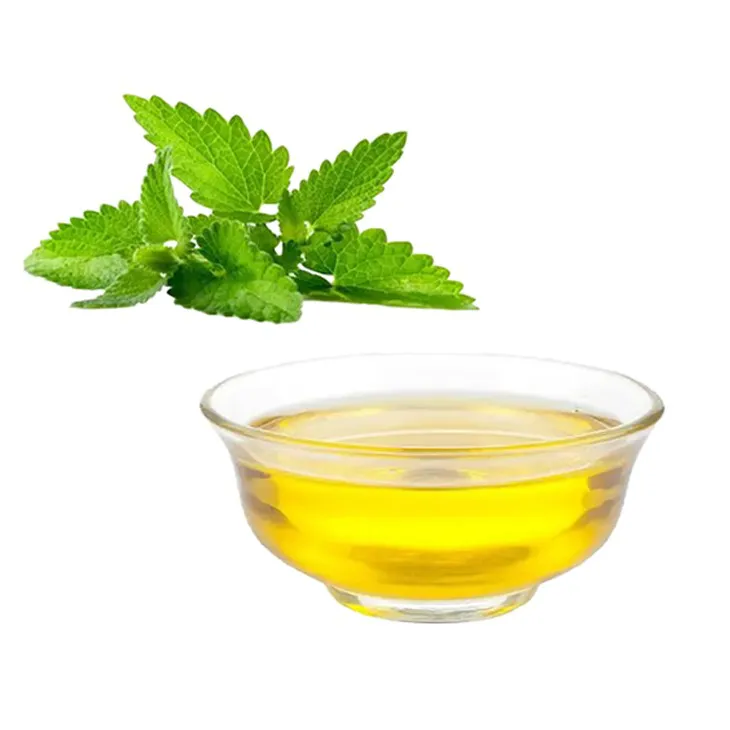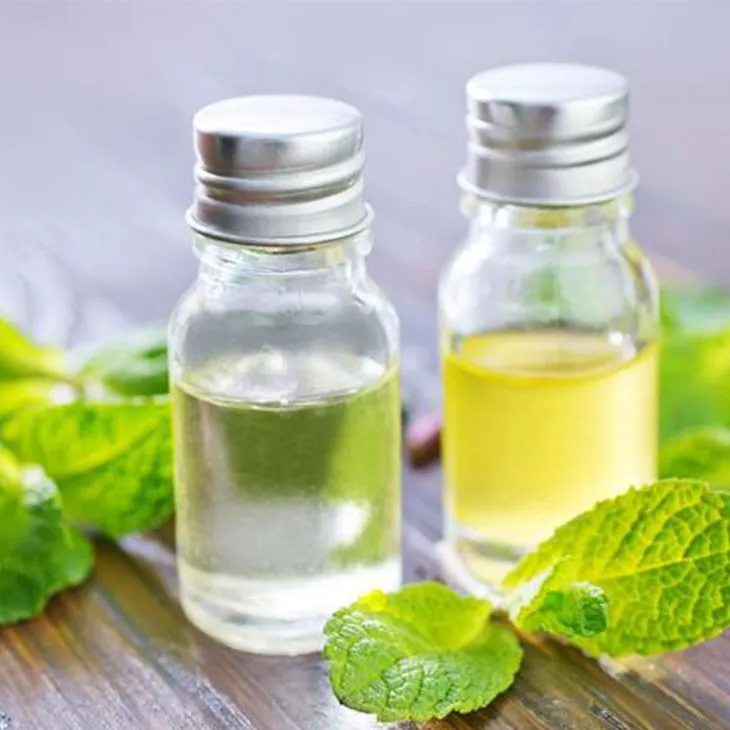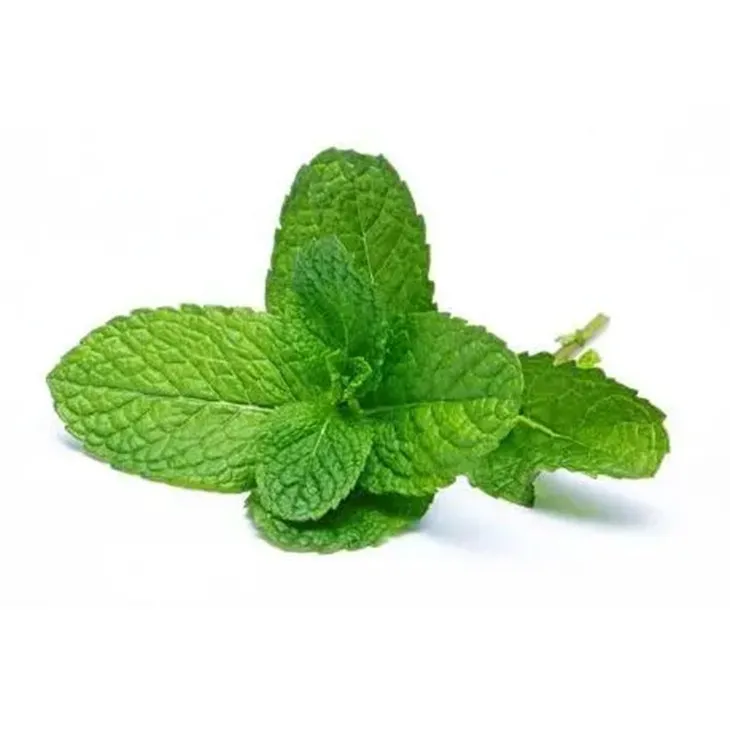- 0086-571-85302990
- sales@greenskybio.com
Organic Peppermint Oil Powder Factory
2024-11-29

Cultivation of Peppermint for Organic Peppermint Oil Powder
The journey of organic Peppermint Oil powder production starts with the cultivation of peppermint. Organic farming is of utmost importance in this regard. Organic farmers take great care in preparing the soil, ensuring it is rich in nutrients without the use of synthetic fertilizers. They also focus on natural pest control methods, avoiding chemical pesticides. This not only helps in protecting the environment but also ensures the purity of the peppermint plants.
Peppermint plants thrive in well - drained soil and require a certain amount of sunlight. Organic farmers need to monitor these factors closely. For example, they may use natural mulches to retain soil moisture and regulate soil temperature. This careful cultivation process is the foundation for obtaining high - quality peppermint for the production of organic Peppermint Oil powder.

Extraction of Peppermint Oil
Once the peppermint is harvested, the extraction of peppermint oil begins. This is a crucial step in the production process. Advanced distillation techniques are commonly employed in an organic peppermint oil powder factory. The harvested peppermint plants are first cleaned thoroughly to remove any dirt or debris.
In the distillation process, the plant matter is placed in a distillation apparatus. Steam is passed through the plant material. The heat from the steam causes the essential oil within the peppermint to vaporize. The vaporized oil, along with the steam, then passes through a condenser. Here, the vapor is cooled down and converted back into a liquid state. Since the density of the peppermint oil is different from that of water, the two can be separated. This results in the extraction of pure peppermint oil.

Conversion of Peppermint Oil to Powder
After the extraction of the liquid peppermint oil, the next step is to convert it into a powder form. This is a complex process that requires specialized equipment and precise control of various parameters. Temperature and pressure are two of the most critical factors in this conversion.
Specialized drying techniques are used. One common method is spray drying. In spray drying, the liquid peppermint oil is first emulsified with a suitable carrier, such as maltodextrin. This emulsion is then sprayed into a hot drying chamber. The hot air in the chamber quickly evaporates the moisture, leaving behind fine particles of peppermint oil powder. Another method could be freeze - drying, which is also used in some cases to preserve the volatile components of the peppermint oil while converting it into a powder.

Applications of Organic Peppermint Oil Powder
Food Industry
In the food industry, organic peppermint oil powder has a wide range of applications. It is a popular flavoring agent in many products.
- Candies: Peppermint - flavored candies are a classic. The addition of peppermint oil powder gives them a refreshing and long - lasting minty taste.
- Gums: Chewing gums often use peppermint oil powder for its characteristic flavor. It provides a cool and refreshing sensation while chewing.
- Beverages: In beverages such as herbal teas and some soft drinks, peppermint oil powder can be added to impart a pleasant minty flavor.
Pharmaceutical and Cosmetic Fields
In the pharmaceutical and cosmetic fields, the properties of organic peppermint oil powder are highly valued.
- Skin Creams and Lotions: Peppermint oil powder is known for its soothing and cooling properties. It can be added to skin creams and lotions to provide relief from skin irritations and give a cooling sensation upon application.
- Oral Care Products: In toothpastes, mouthwashes, and other oral care products, peppermint oil powder is used for its fresh minty flavor and its ability to leave a clean and fresh feeling in the mouth.

Quality Control in an Organic Peppermint Oil Powder Factory
Quality control is a vital aspect of an organic peppermint oil powder factory. Strict standards are adhered to throughout the production process.
Regular testing is carried out at different stages of production. Firstly, during the cultivation of peppermint, samples are taken to check for compliance with organic farming standards. This includes testing for the absence of prohibited pesticides and fertilizers.
After extraction of the peppermint oil, tests are conducted to determine its purity and potency. This may involve analyzing the chemical composition of the oil using techniques such as gas chromatography. In the powder - making process, quality checks are made to ensure that the powder has the correct particle size distribution and that it has been dried properly without any degradation of the active components.
Before the final product is packaged and shipped, comprehensive tests are carried out to check for the presence of any contaminants. This is crucial as the product is used in food, pharmaceutical, and cosmetic industries where safety and quality are of prime importance.
Innovation and Competitiveness in the Organic Peppermint Oil Powder Factory
With the increasing demand for natural and organic products, organic peppermint oil powder factories need to be innovative to stay competitive.
One area of innovation is in the cultivation methods. Some factories are exploring new ways to optimize the growth of peppermint plants, such as using precision agriculture techniques. These techniques involve using sensors to monitor soil conditions, plant health, and environmental factors in real - time, allowing for more precise management of the cultivation process.
In the extraction process, research is being carried out to develop more efficient and environmentally friendly distillation methods. For example, some are looking into using renewable energy sources to power the distillation process, reducing the carbon footprint of the production.
In terms of powder - making, new formulations and techniques are being explored to improve the quality and stability of the peppermint oil powder. This includes finding better carrier materials for spray drying and improving the control of drying parameters to enhance the final product's characteristics.
FAQ:
What are the main steps in the production process of an organic peppermint oil powder factory?
The production process typically starts with the careful cultivation of peppermint using organic farming methods. After harvesting, an advanced distillation technique is used for extraction to obtain the essential oil. Then, the liquid peppermint oil is converted into powder form using specialized equipment with precise control of parameters like temperature and pressure.
What are the applications of organic peppermint oil powder?
In the food industry, it is used as a flavoring agent in candies, gums, and beverages. In the pharmaceutical and cosmetic fields, it is known for its soothing and cooling properties and can be an ingredient in skin creams, lotions, and oral care products.
Why is quality control important in an organic peppermint oil powder factory?
Quality control is crucial as regular testing is carried out to check for purity, potency, and the absence of contaminants. This ensures that the final product meets the high - quality requirements of both domestic and international markets.
How does an organic peppermint oil powder factory ensure the purity of its product?
By using organic farming methods for peppermint cultivation, which is the starting point of the production process. Also, through strict quality control measures including regular testing for purity and the absence of contaminants.
What techniques are used in the extraction of peppermint oil in an organic peppermint oil powder factory?
Advanced distillation techniques are often used to separate the peppermint oil from the plant matter during the extraction process.
Related literature
- Title: Organic Peppermint Cultivation and Its Impact on Oil Quality"
- Title: "The Production and Applications of Organic Peppermint Oil Powder in Modern Industries"
- Title: "Quality Assurance in Organic Peppermint Oil Powder Manufacturing"
- ▶ Hesperidin
- ▶ Citrus Bioflavonoids
- ▶ Plant Extract
- ▶ lycopene
- ▶ Diosmin
- ▶ Grape seed extract
- ▶ Sea buckthorn Juice Powder
- ▶ Fruit Juice Powder
- ▶ Hops Extract
- ▶ Artichoke Extract
- ▶ Mushroom extract
- ▶ Astaxanthin
- ▶ Green Tea Extract
- ▶ Curcumin
- ▶ Horse Chestnut Extract
- ▶ Other Product
- ▶ Boswellia Serrata Extract
- ▶ Resveratrol
- ▶ Marigold Extract
- ▶ Grape Leaf Extract
- ▶ New Product
- ▶ Aminolevulinic acid
- ▶ Cranberry Extract
- ▶ Red Yeast Rice
- ▶ Red Wine Extract
-
Coix Seed Extract
2024-11-29
-
Sugarcane Extract
2024-11-29
-
Saw Palmetto Extract
2024-11-29
-
Cactus Extract
2024-11-29
-
Pueraria Lobata Extract
2024-11-29
-
Dan Shen Root Extract/Salvia Root Extract
2024-11-29
-
Lemon Extract
2024-11-29
-
Red Wine Extract
2024-11-29
-
Beta Carotene
2024-11-29
-
Tamarind extract powder
2024-11-29





















